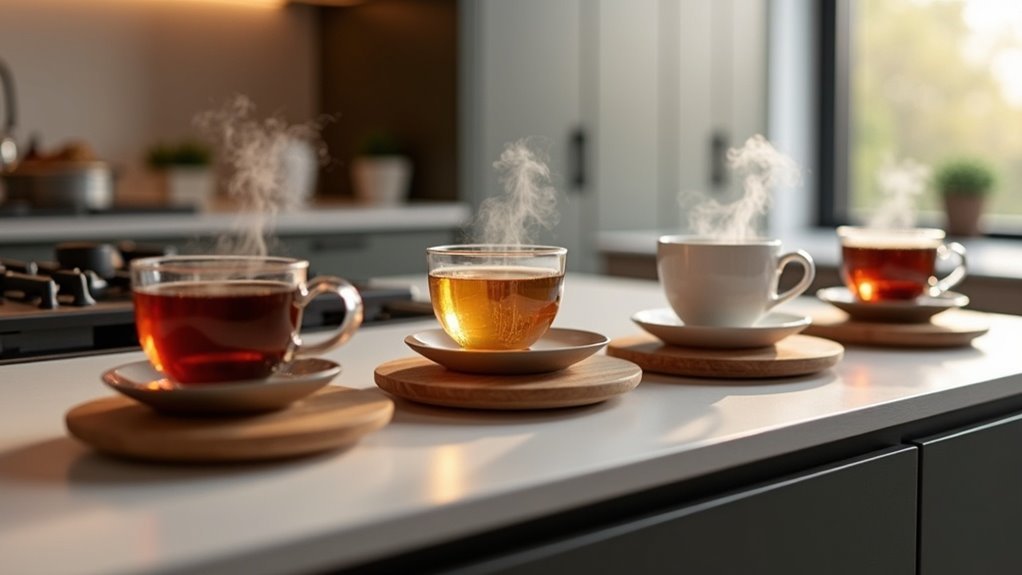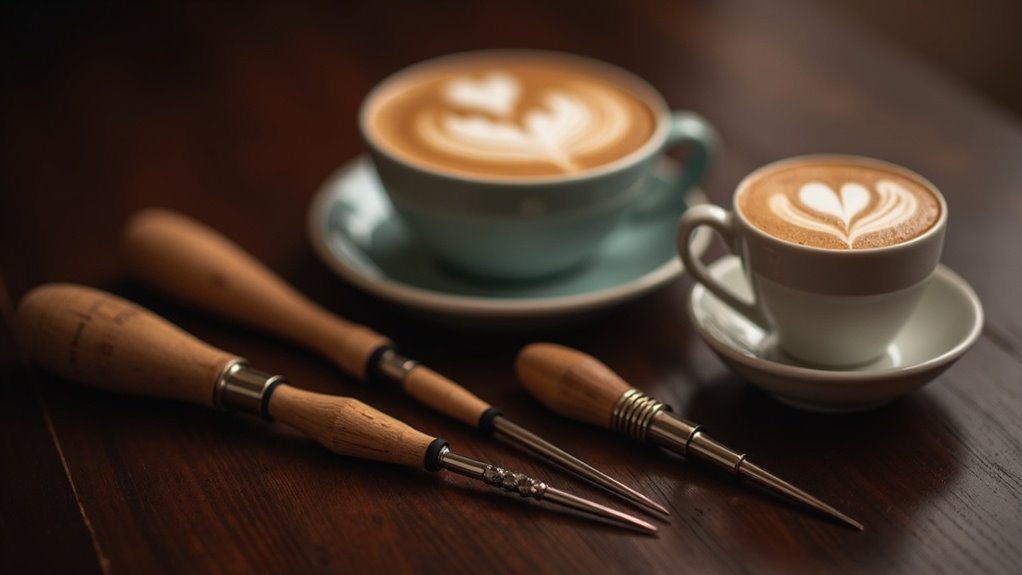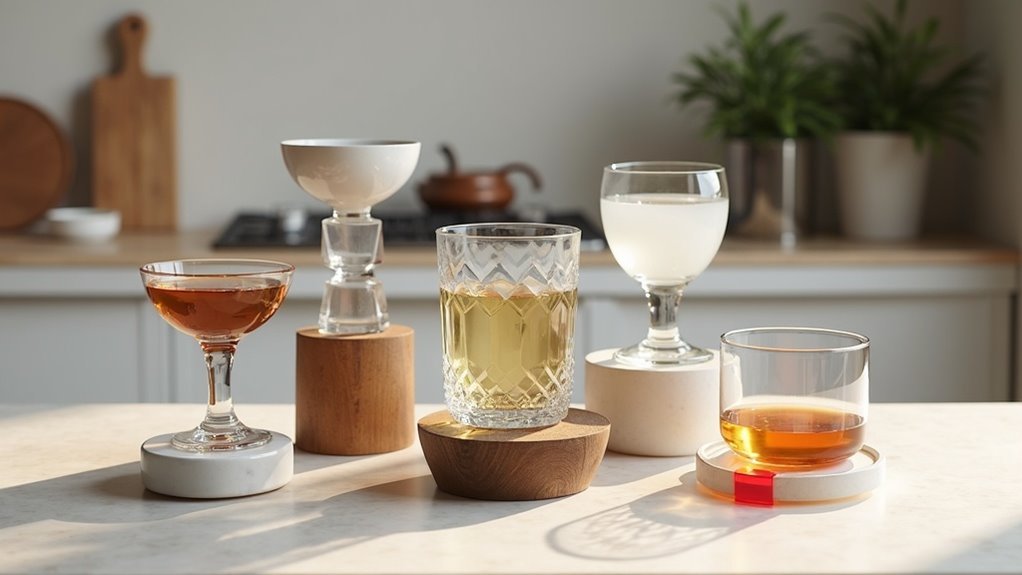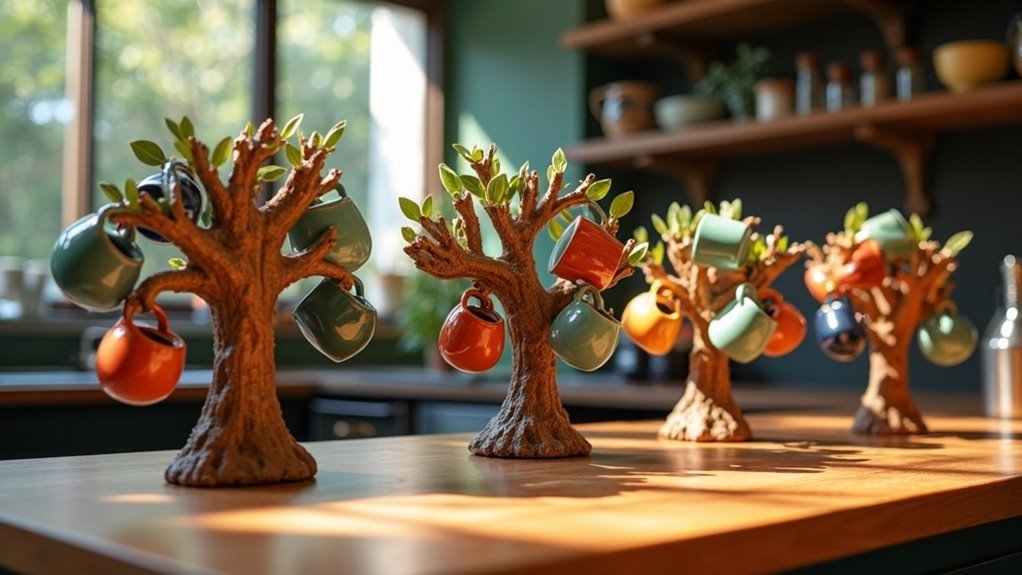Norwegian Kokekaffe is a traditional brewing method that celebrates the richness and depth of coffee. This technique involves boiling coarsely ground light roast beans, typically sourced from South or Central America, which results in robust flavors and a higher caffeine kick. Often enjoyed outdoors, Kokekaffe not only connects you with nature but also creates memorable experiences around a shared love of coffee. As you savor its velvety finish, you may uncover intriguing facets of Kokekaffe’s history and its cultural significance in Norway, enriching your overall coffee experience.
Key Takeaways
- Kokekaffe is a traditional Norwegian brewing method celebrated for its robust flavor, achieved by boiling coarsely ground light roast coffee.
- The ideal brewing ratio is 65 grams of coffee per liter of water, which leads to a higher caffeine content.
- This method, also known as Turkaffe when made outdoors, reflects Norwegian coffee culture and fosters social connections.
- Kokekaffe typically highlights South or Central American beans, intentionally avoiding African varieties to preserve flavor balance.
- The brewing process includes steeping coffee in boiling water, enhancing the experience of savoring coffee in nature.
Understanding Kokekaffe
Kokekaffe, or boiled coffee, is more than just a brewing method; it’s a cherished tradition in Norway that brings people together, especially in the great outdoors.
To brew coffee the Norwegian way, you’ll need coarsely ground light roast beans, preferably from South or Central America. Start by boiling water in a kettle, then remove it from heat and stir in the coffee, letting it steep for about five minutes.
With a typical ratio of 65 grams of coffee per liter, Kokekaffe offers a robust flavor and higher caffeine content, making each sip a delightful experience on your outdoor adventures.
Enjoying Kokekaffe not only enhances the coffee drinking experience but also connects you to a rich cultural heritage.
The History of Kokekaffe in Norway
When coffee first arrived in Norway in the 1690s, it sparked a transformation in social customs and brewing techniques.
By the 19th century, Kokekaffe emerged as a beloved method, emphasizing rich flavors and aromas that captivated the nation.
As you explore its history, you’ll see how this unique brewing style reflects Norway’s evolving coffee culture and its preference for quality over quantity.
Coffee enthusiasts can appreciate the deep-rooted traditions that have shaped Norway’s approach to brewing, making Kokekaffe an essential part of the country’s coffee heritage.
Coffee’s Arrival in Norway
Though it took some time for coffee to make its mark in Norway, its arrival in the 1690s set the stage for a cultural transformation. Initially, the brew was a novelty, but by the 18th century, it gained traction among Norwegians.
The late 1800s saw coffee rise to mainstream popularity, thanks to improved trade with Denmark. During this period, kokekaffe emerged as the traditional brewing method, focusing on flavor and aroma.
Peter Christen Asbjørnsen’s 1861 guide refined preparation techniques, shifting the emphasis from quantity to quality. This method, involving boiling water and coarsely ground coffee, created a light, complex brew that delighted many coffee enthusiasts.
Evolution of Brewing Methods
With the rise of coffee’s popularity in Norway during the 1800s, a notable evolution in brewing methods took shape, particularly through the development of kokekaffe. This method shifted the focus from quantity to quality, enhancing the overall coffee experience.
Key aspects include:
- Boiling water for ideal extraction
- Adding coarsely ground coffee for balanced flavor
- Steeping to highlight complex aromas
- Emphasizing the enjoyment of each cup
- Reflecting Norway’s cultural appreciation for coffee
Peter Christen Asbjørnsen’s 1861 guide further refined these techniques, marking a significant shift in how Norwegians embraced their coffee, celebrating its nuances rather than merely consuming it.
This evolution underscores the importance of appreciating the art of coffee brewing and the rich cultural heritage surrounding this beloved beverage.
Coffee Bean Selection for Kokekaffe
Selecting the right coffee beans for kokekaffe is essential to achieving that rich, aromatic brew that defines this traditional Norwegian method.
Opt for South or Central American beans, as their roundness and mellow acidity complement this preparation beautifully. Light roast coffee is your best bet, highlighting the beans’ complexity and unique flavors for an aromatic experience.
Gourmet single-origin beans shine, showcasing distinct characteristics that elevate your brew. While any coffee can be used, steer clear of African beans, as they often lead to unbalanced flavors.
Focus on quality ground coffee to create a delightful kokekaffe that satisfies your palate.
Brewing Process of Kokekaffe
To brew the perfect kokekaffe, start by boiling a liter of water in a kettle, ensuring it reaches a rolling boil before removing it from the heat.
Begin your kokekaffe journey by bringing a liter of water to a rolling boil for the perfect brew.
Then, add 65 grams of coarsely ground coffee to maintain tradition, and let it steep for five minutes, stirring well to ensure the grounds are fully saturated.
After steeping, skim off the bitter foam for a smoother flavor.
- Use coarsely ground coffee for traditional preparation.
- A finer grind can offer a more balanced brew.
- Stir thoroughly for even saturation of the coffee grounds.
- Skim the foam to enhance the overall taste.
- Pour the brewed coffee into another container to stop the steeping process.
Enjoy your aromatic creation!
Serving Tips for Kokekaffe
When it’s time to serve your Kokekaffe, remember to pour gently to keep those precious coffee grounds settled at the bottom.
Before you fill your cup, skim off the bitter foam that forms on top for a smoother taste.
This not only enhances flavor but also sets the stage for lively conversations about your favorite coffee brewing techniques!
Pouring Techniques
Pouring kokekaffe requires a delicate touch to ensure the rich flavors shine through without disturbing the grounds lingering at the bottom of the kettle.
Master these pouring techniques for the perfect cup of coffee:
- Pour gently to minimize disturbance of the coffee grounds.
- Serve immediately after the 5-minute steeping to avoid bitterness.
- If not serving all at once, transfer the coffee to another container to preserve its flavor.
- Skim off any bitter foam or crema for an enhanced taste experience.
- Use a steady hand, tilting the kettle smoothly to keep the grounds settled.
With practice, you’ll elevate your kokekaffe experience, delighting your senses with every sip of your coffee.
Foam Removal Tips
One effective way to enhance your coffee experience is by mastering the art of foam removal. Start by skimming the bitter foam or crema off the top with a spoon before serving; this boosts flavor while reducing bitterness.
After steeping, gently stir the ground coffee to help it sink, which minimizes foam when pouring. When serving, pour slowly and steadily to avoid disturbing settled grounds.
If you’re not serving immediately, transfer the brewed coffee to another container to prevent prolonged steeping and excess foam formation.
Finally, use a cup with a larger opening to minimize spills. Enjoy your refined cup of coffee!
The Cultural Significance of Kokekaffe
Kokekaffe isn’t just a drink; it’s a cherished tradition that embodies the essence of Norwegian coffee culture. Its significance goes beyond mere consumption, deeply woven into the social fabric of daily life.
When you brew kokekaffe, you’re not just enjoying coffee; you’re engaging in a ritual that fosters connection and community.
- Celebrates outdoor experiences, often brewed over open fires
- Enhances social interaction during gatherings and breaks
- Reflects Norway’s rich coffee heritage and traditional brewing methods
- Promotes relaxation and connection, similar to the concept of ‘fika’
- Reinforces appreciation for nature and shared moments over a cup of coffee
Exploring Norwegian Coffee Shops
Norway’s coffee culture thrives not just in homes but also in its vibrant coffee shops, where the spirit of kokekaffe blends with modern brewing techniques and community engagement.
In Oslo, you’ll find gems like Tim Wendelboe, where a World Barista Champion crafts exquisite brews through micro-roasting. At Java Kaffebar, enjoy meticulously brewed espressos in a lively atmosphere.
Stockfleths Kaffe og Te offers a taste of history with its fine Norwegian coffee. Supreme Roastworks focuses on natural coffees, while Hendrix Ibsen introduces you to nitro cold brew and cultural events, making each visit an opportunity to savor and appreciate the art of coffee-making.
This website celebrates the rich diversity and craftsmanship of coffee, inviting you to explore and indulge in the world of exceptional brews.
Kokekaffe in Outdoor Experiences
When you’re savoring the rich landscapes of Norway, nothing quite compares to brewing a pot of kokekaffe over an open fire. This traditional method, known as Turkaffe, is ideal for coffee lovers who seek adventure.
With just a kettle and coarsely ground coffee, you can create an unforgettable coffee experience.
- Relish the rich, velvety flavor that comes from full immersion brewing.
- Connect with the great outdoors as the enticing aroma wafts through the air.
- Foster a sense of community by sharing flavorful moments with friends.
- Embrace the simplicity of traditional coffee-making methods.
- Elevate your outdoor coffee break to a new level of enjoyment.
Kokekaffe truly enhances your coffee journey while exploring the beauty of nature!








